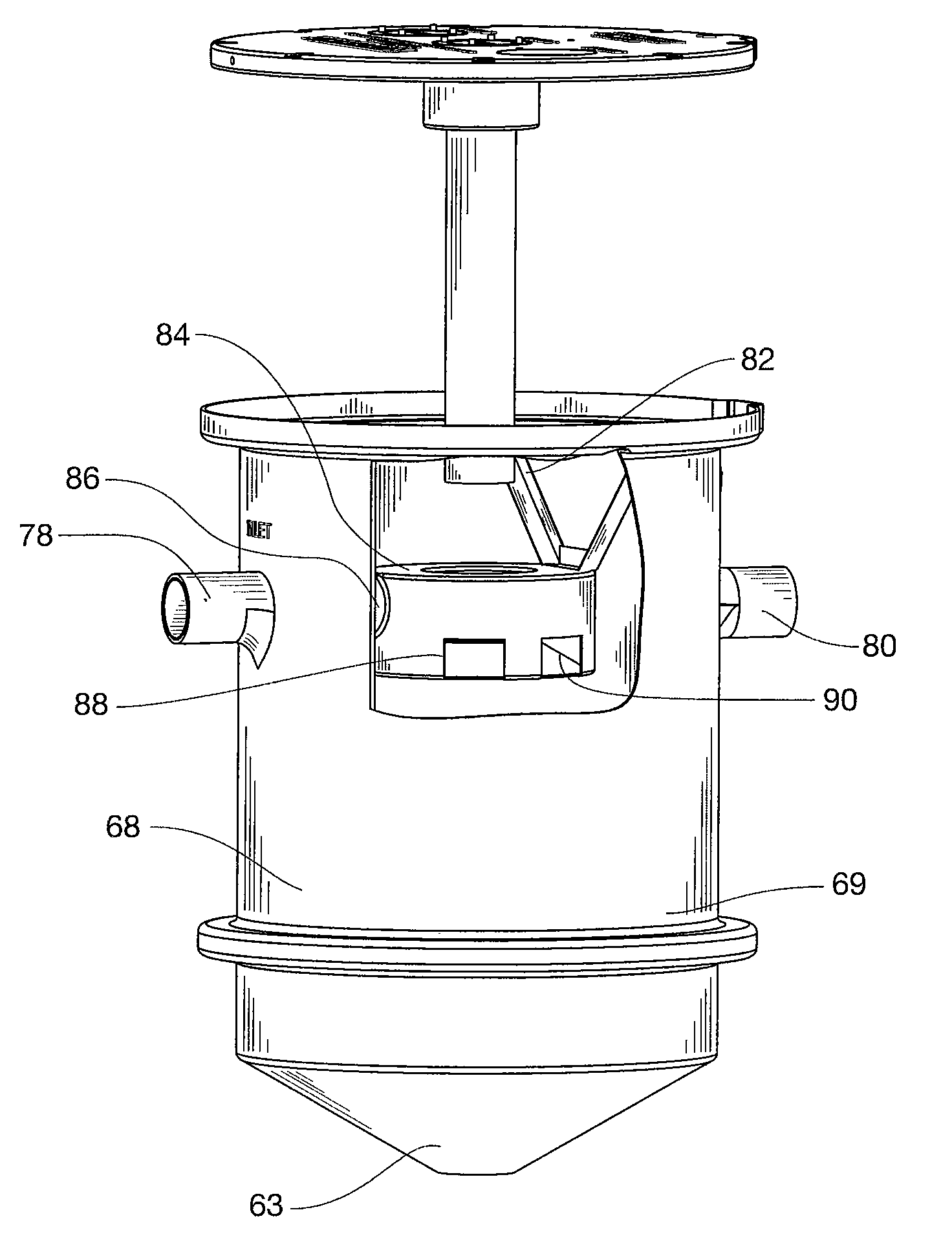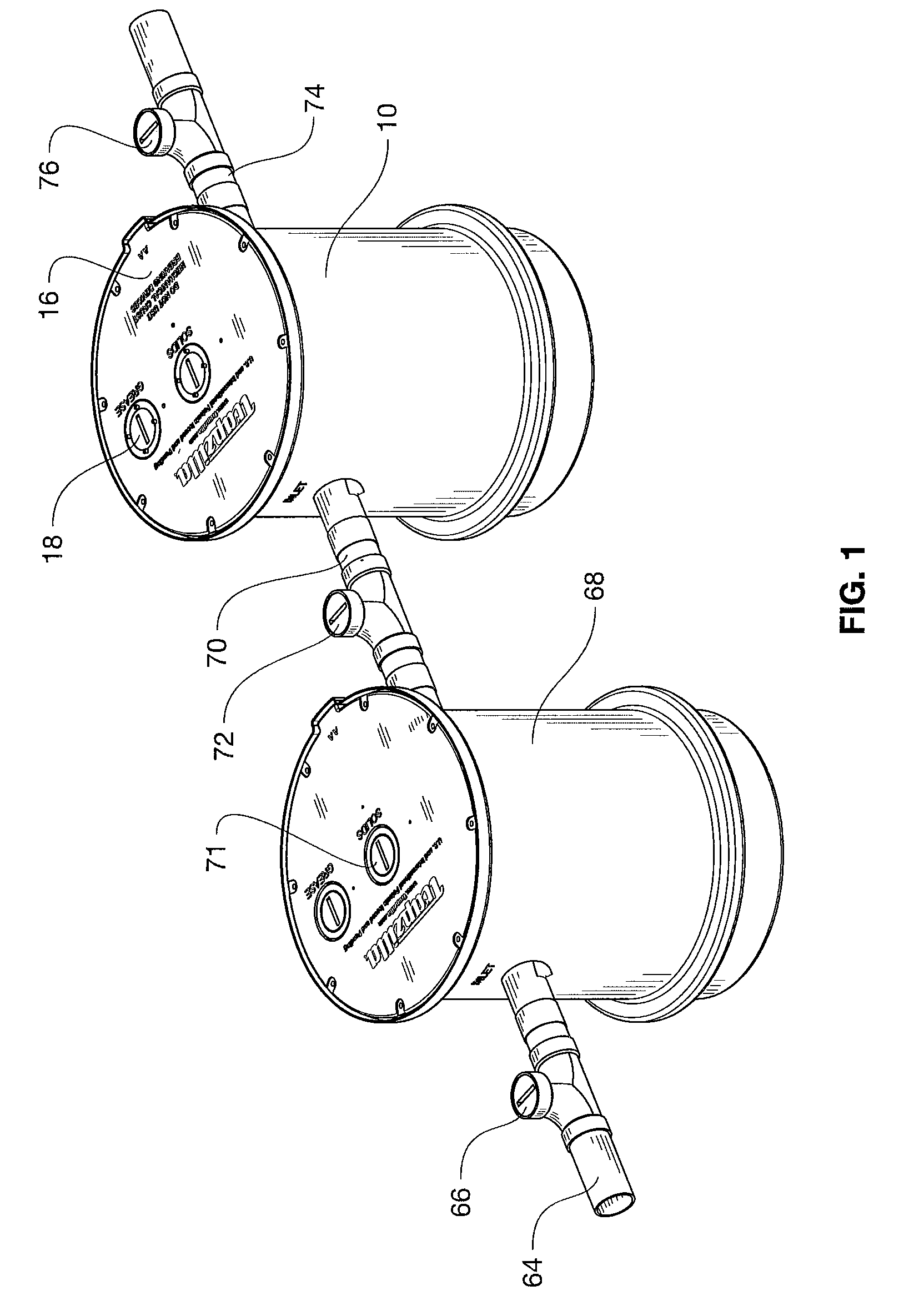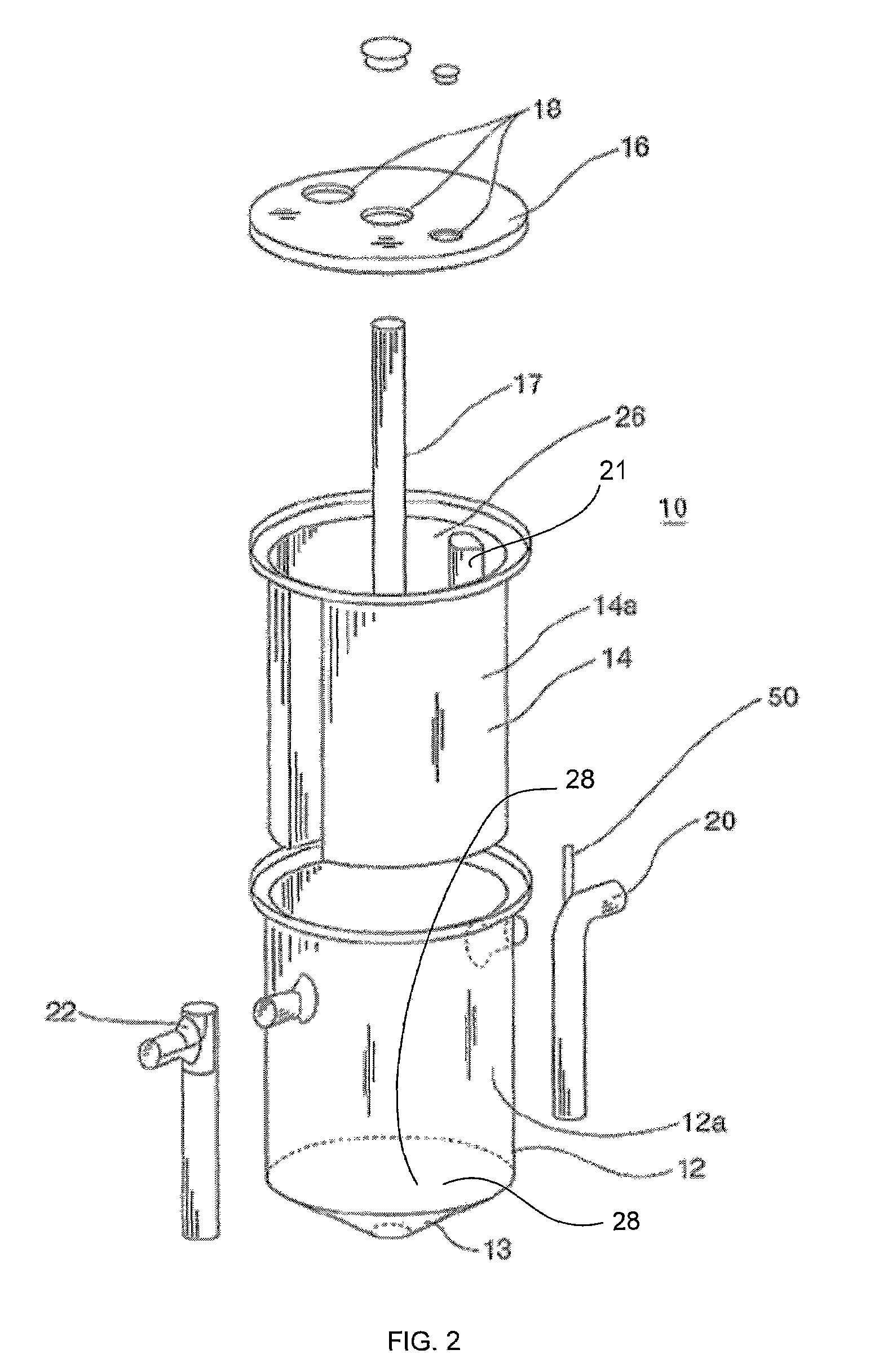Passive grease trap with pre-stage for solids separation
a grease trap and solid separation technology, applied in sedimentation settling tanks, liquid displacement, separation processes, etc., can solve the problems of grey water waste expulsion, waste accumulating inside the tank, etc., and achieve the effect of slowing waste water entering the container and reducing solids entrainmen
- Summary
- Abstract
- Description
- Claims
- Application Information
AI Technical Summary
Benefits of technology
Problems solved by technology
Method used
Image
Examples
Embodiment Construction
[0020]FIG. 1 shows an installation having both an upstream solids collector 68 and a downstream grease trap or grease interceptor 10. Effluent from a kitchen or other source of solids can enter the system through an inlet pipe 64 having a clean out port 66, for discharge into the solids interceptor 68. The effluent typically carries a fats, oils and grease (“F.O.G.”) which are to be removed before the effluent is discharged to a sewer line where the F.O.G. can cause clogs. As discussed below, the solids interceptor 68 is configured and arranged to intercept and retain solids within its tank with cylindrical side wall and sloping bottom and allow grease-laden water to pass downstream through a drain line 70 having its own clean out port 72. The waste water exiting through port 70 passes to the grease interceptor 10, discussed in more detail below. The grease interceptor 10 has a primary function of collecting grease, but also will collect some solids that continue to be entrained in ...
PUM
| Property | Measurement | Unit |
|---|---|---|
| residence time | aaaaa | aaaaa |
| size | aaaaa | aaaaa |
| shape | aaaaa | aaaaa |
Abstract
Description
Claims
Application Information
 Login to View More
Login to View More - R&D
- Intellectual Property
- Life Sciences
- Materials
- Tech Scout
- Unparalleled Data Quality
- Higher Quality Content
- 60% Fewer Hallucinations
Browse by: Latest US Patents, China's latest patents, Technical Efficacy Thesaurus, Application Domain, Technology Topic, Popular Technical Reports.
© 2025 PatSnap. All rights reserved.Legal|Privacy policy|Modern Slavery Act Transparency Statement|Sitemap|About US| Contact US: help@patsnap.com



